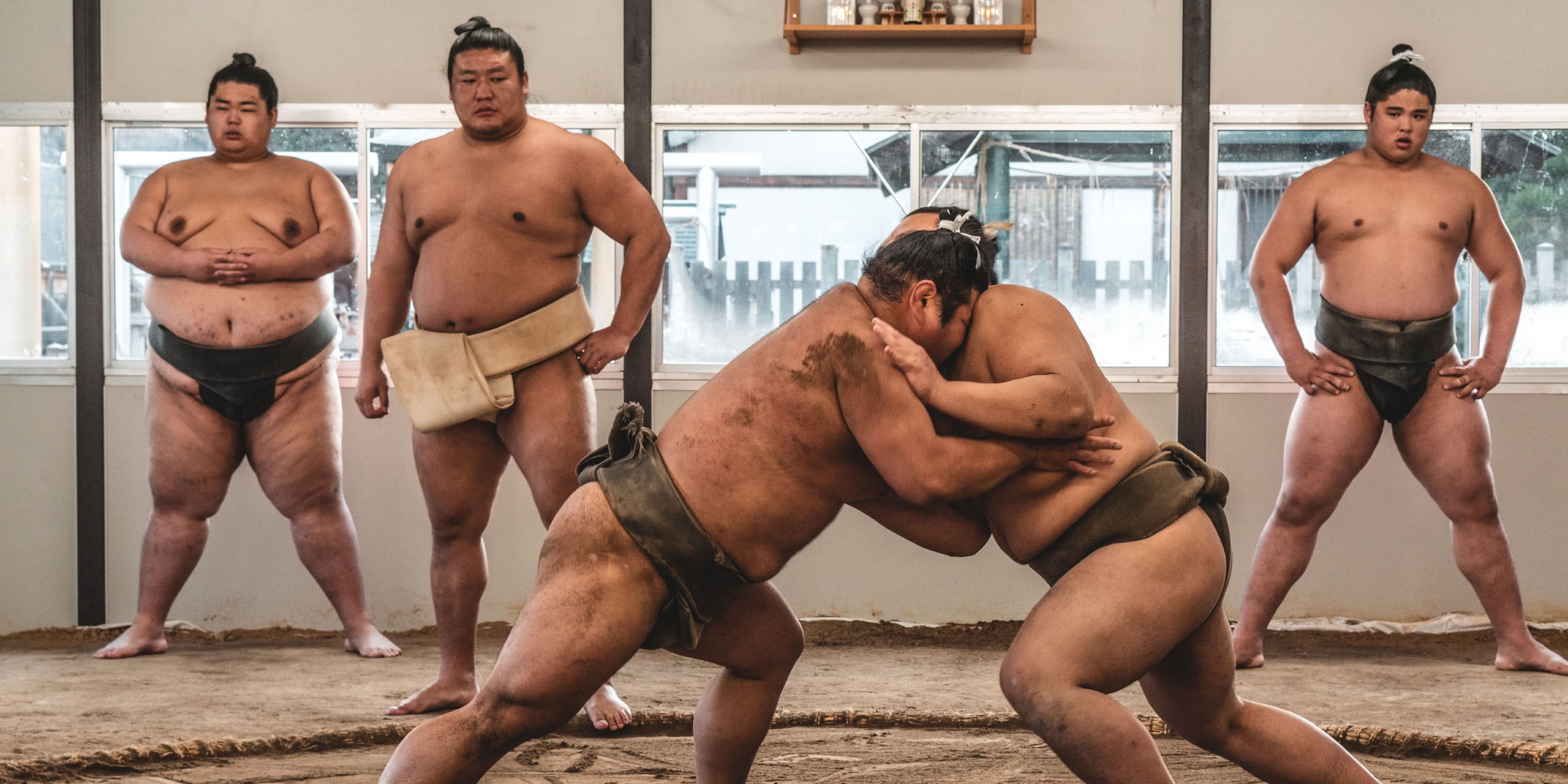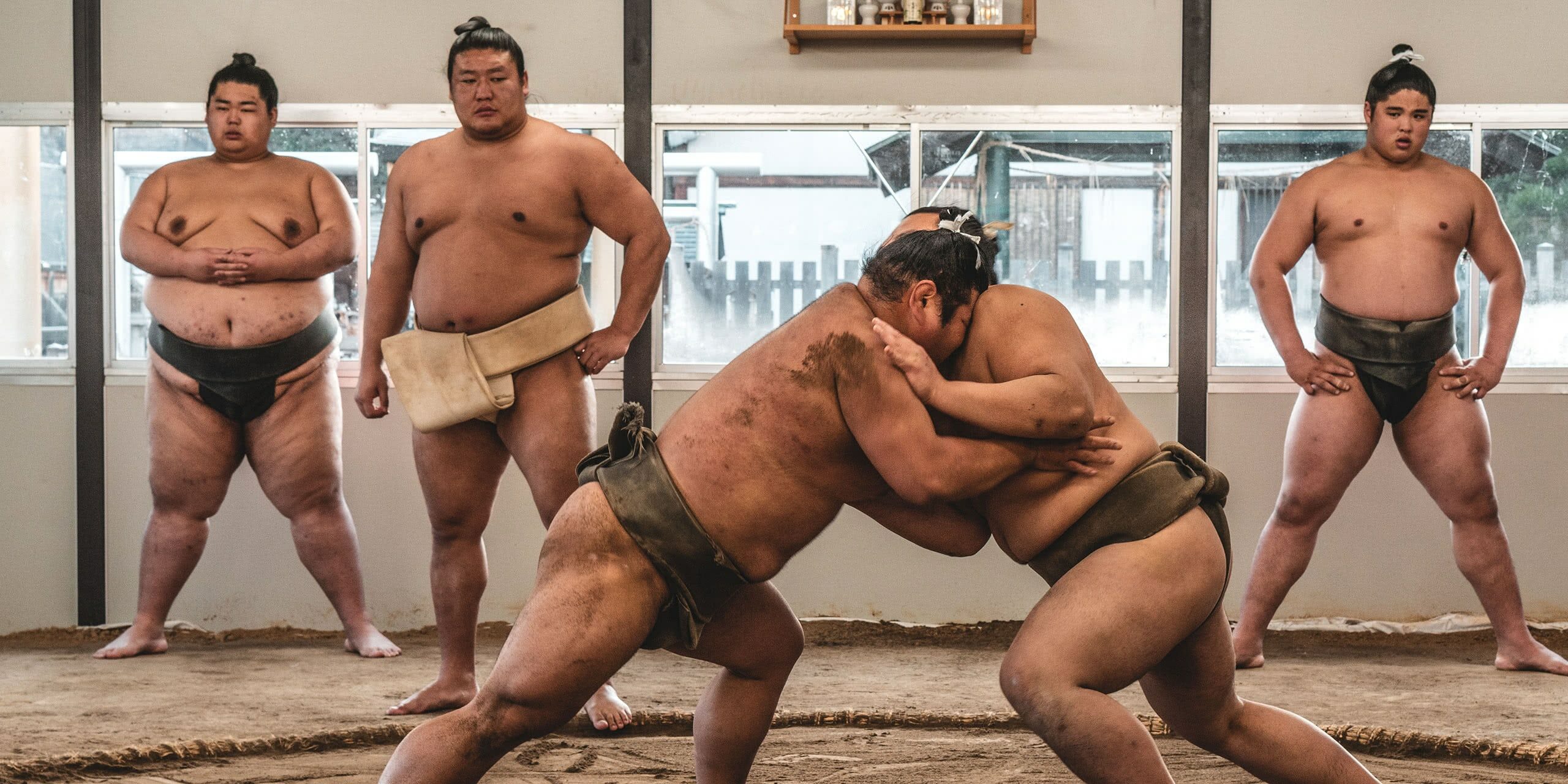
As the national sport of Japan, sumo wrestling is a culturally important – yet often misunderstood – practice with much more to it than meets the eye. In modern sumo, the “rikishi” gain weight to increase their competitive advantage as there are no weight classes or restrictions. Tradition as well as religion still play an important role in this sporting spectacular, and travelers who are lucky enough can watch sumo wrestlers from their training to the ring.
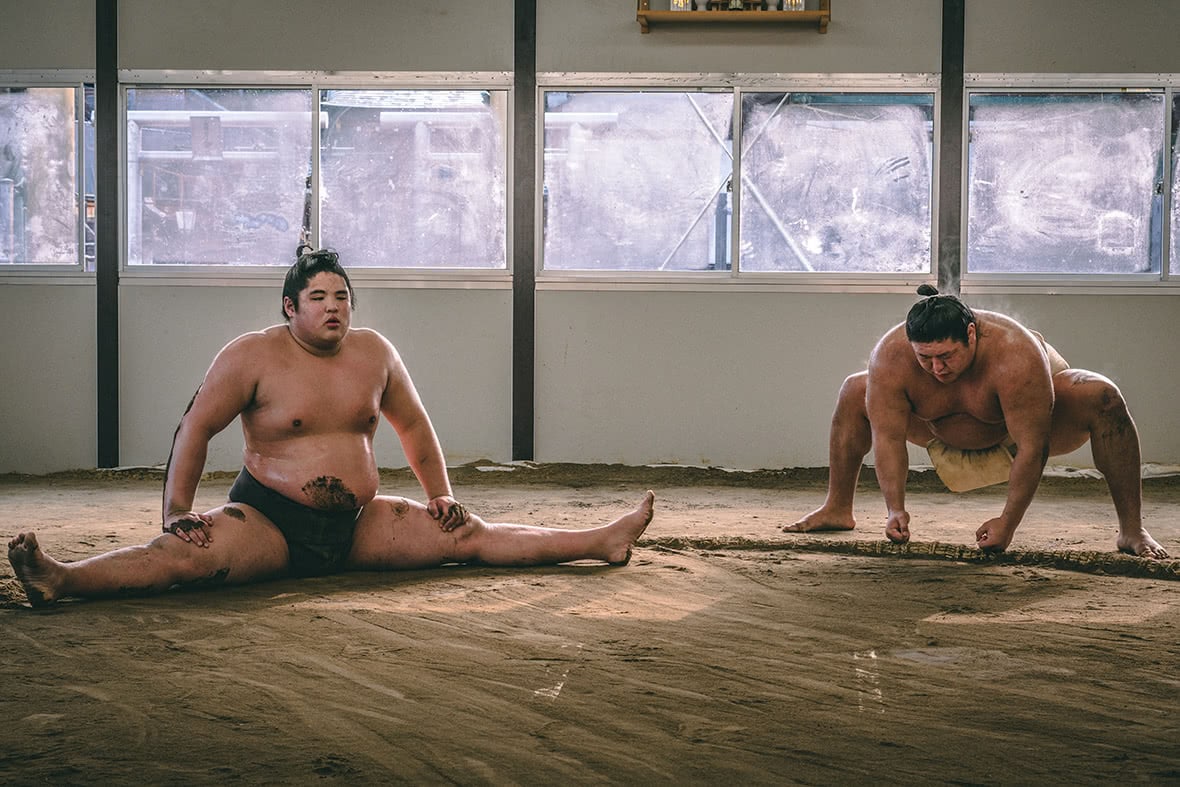
History of Sumo
The history of sumo wrestling dates back nearly two millennia to its origins as a Shinto ritual that was performed in the growing season to honor the spirits. Shinto, which translates as “the way of the gods” in Japanese, is the indigenous faith that remains the island nation’s primary religion alongside Buddhism in the 21st century. The Shinto deities, also called “kami,” were thought to be entertained and pleased by the wrestlers as they met in a purified ring, in turn leading to a bountiful harvest and good fortune.
The popular image of the chubby, over-sized sumo wrestler was not always based in reality, as earlier participants in the sport were much leaner and more muscular. Modern sumo culture since the 20th century has seen a shift in which wrestlers look to pack on as much size and weight as possible to help overpower opponents in the ring. To achieve this kind of bulk, wrestlers adhere to a strict dietary regimen that goes way beyond just stuffing their faces. Most wrestlers follow rigid routines in which they exercise on an empty stomach and sleep after eating to help convert the 10,000-some calories they consume per day into mass and strength.
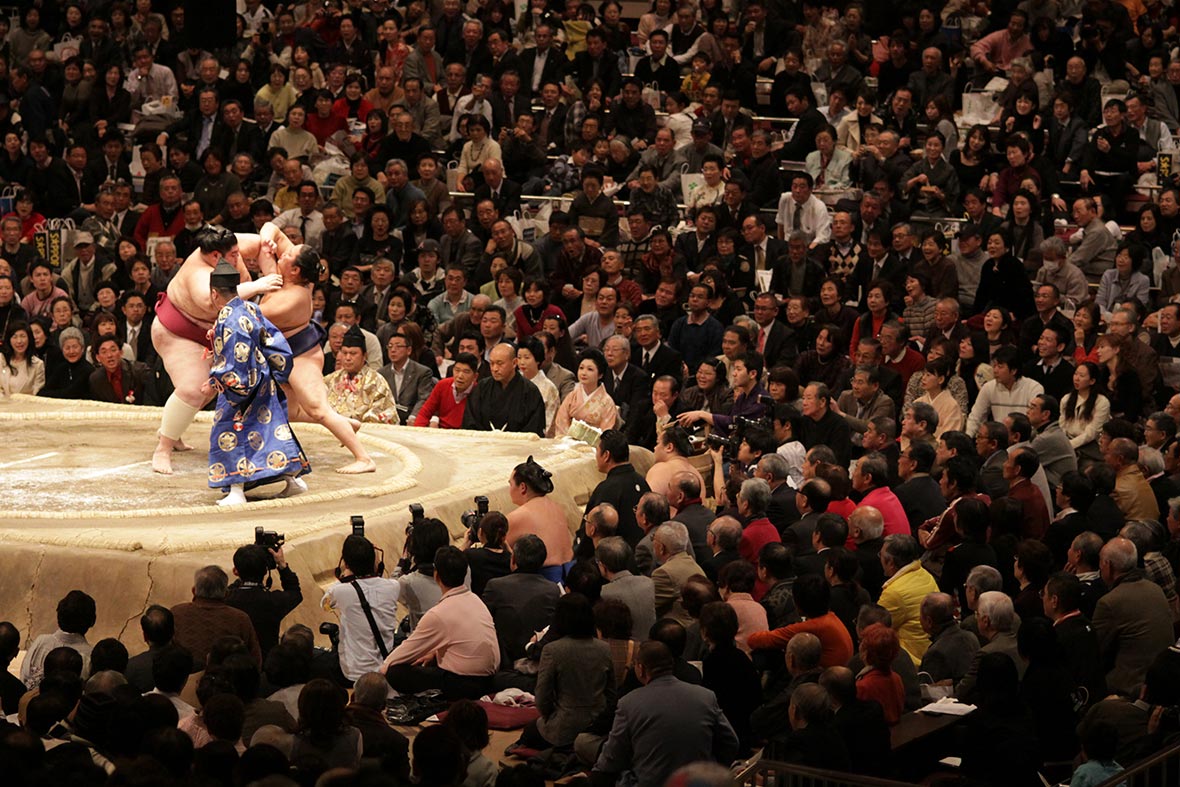
Know the Rules
The rules that govern the world of sumo wrestling go far beyond merely dictating what happens in the ring. Wrestlers are expected to display traditional rikishi hair and clothing styles – including when not in the ring and going about their daily routines – and many other ancient traditions still apply today. But when it comes to rules in the ring itself, sumo is really pretty simple: two wrestlers meet in the elevated “dohyo” that is traditionally made of clay and covered in a layer of sand. Matches begin once both wrestlers touch the ground with both fists at the same time, and a match is over when either wrestler is thrown out of the ring or touches the ground with any part of his body aside from the soles of his feet.
Other rules that stem from sumo wrestling’s ancient origins and that are still in practice today include the use of a strict ranking system called “banzuke,” which gets updated after every major tournament, and the forbidding of women as participants. This second one was not always the case, as female sumo did have a presence in Japan as recently as the 18th Century. Today, however, the Japanese Sumo Association dictates that only men may become professional sumo wrestlers, and even male wrestlers are sometimes restricted by nationality. Some stables have been known to make rules barring more than a certain number of non-Japanese-born wrestlers from training there at a given time.
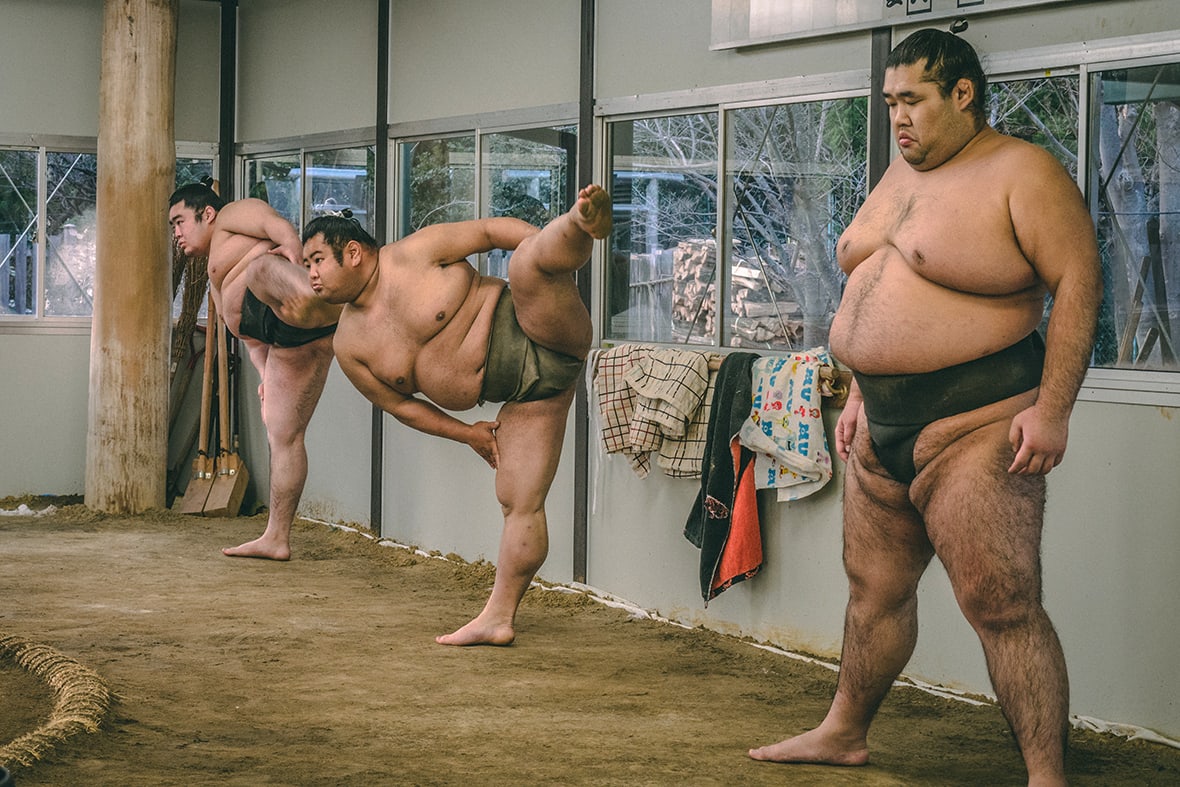
Etiquette
Along with tradition, etiquette plays a critical part in sumo culture. As wrestlers are ranked according to performance and experience level, viewers in the crowd are arranged depending upon the price of their tickets. Ringside floor-level seats, often called “tamari” seats, are generally pricier and reserved for sponsors and those with connections, and other seats, which can broadly be categorized as “box seats,” are farther from the stage and typically don’t come with perks like food service.
Etiquette can also vary. “At the one I went to there was no getting up and leaving because that’s rude. But there is another one in Tokyo that is less strict,” says Jay Tindall co-founder and COO of Remote Lands.
Another interesting aspect of sumo culture is the phenomenon of sumo stables, which are places where devoted wrestlers eat, sleep, train, and essentially live out their lives as long as they are actively wrestling. Visitors are occasionally allowed into these stables to watch wrestlers practice and even eat lunch with them, but respect dictates that the stables only open their doors to visitors two weeks before the Tokyo tournament each year. This is when the stables are at their busiest, with wrestlers traveling from far and wide to participate in the great contest.
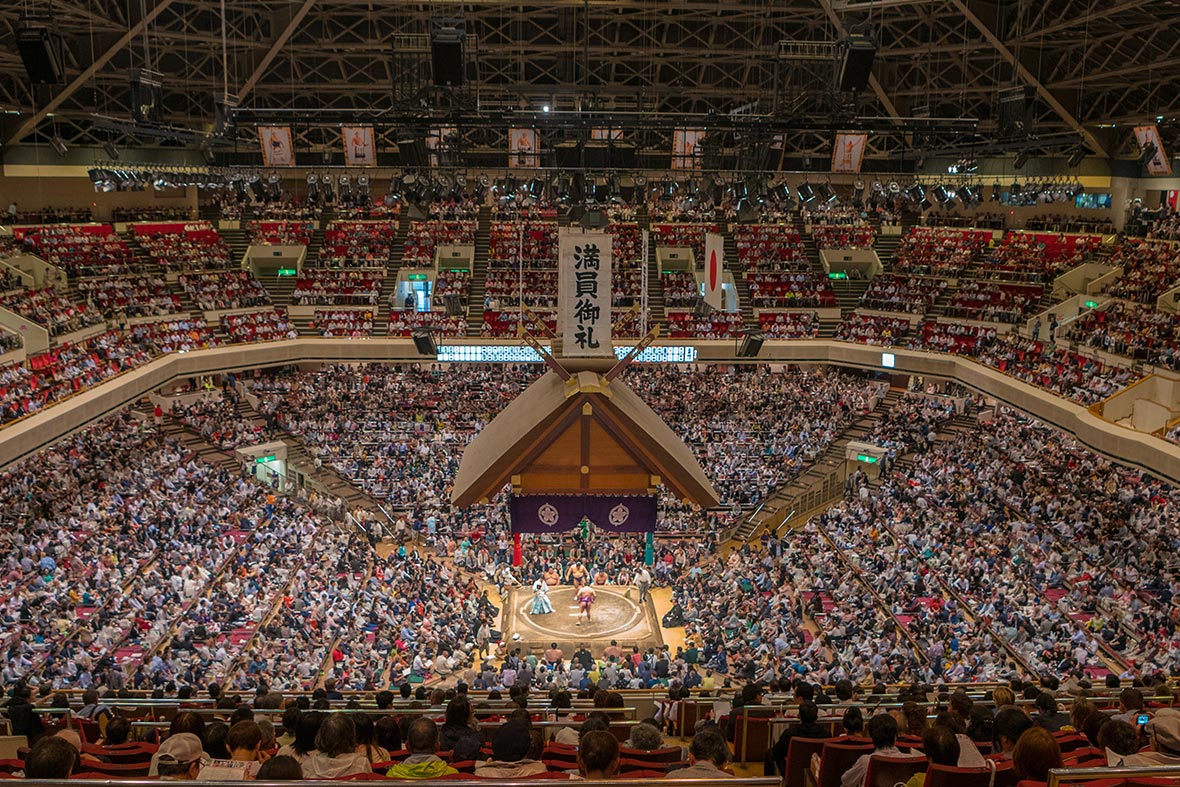
Traditions
Along with the lifestyle-based and in-match rules that govern sumo culture, there are a myriad of fascinating traditions that travelers can expect to see on display if they’re lucky enough to watch a match or visit a stable. These include the symbolic pre-match purification of the ring with salt, the rinsing of mouths with a ladle of water, and ceremonial foot-stomping. The former two traditions harken back to the Shinto rituals of old and are meant to make the wrestlers clean enough to enter the purified ring, and the stomping of feet – also known as a “shiko” exercise – is meant to showcase a wrestler’s power and flexibility.

